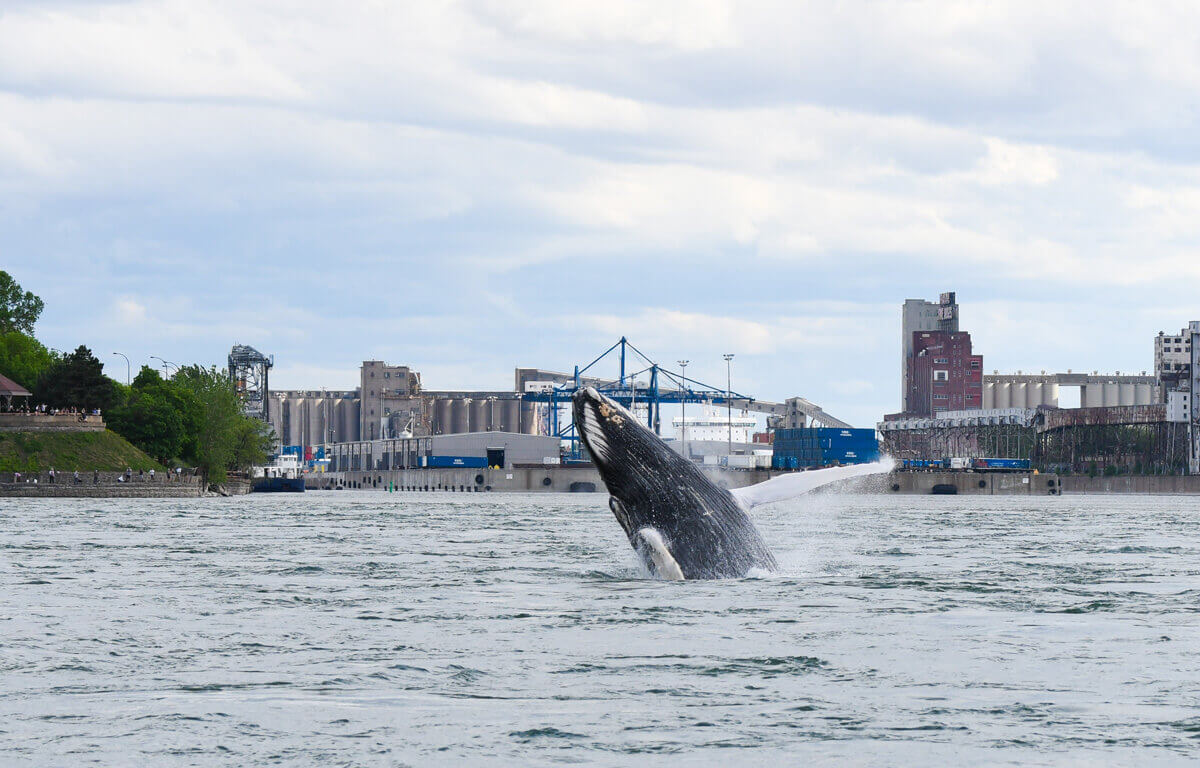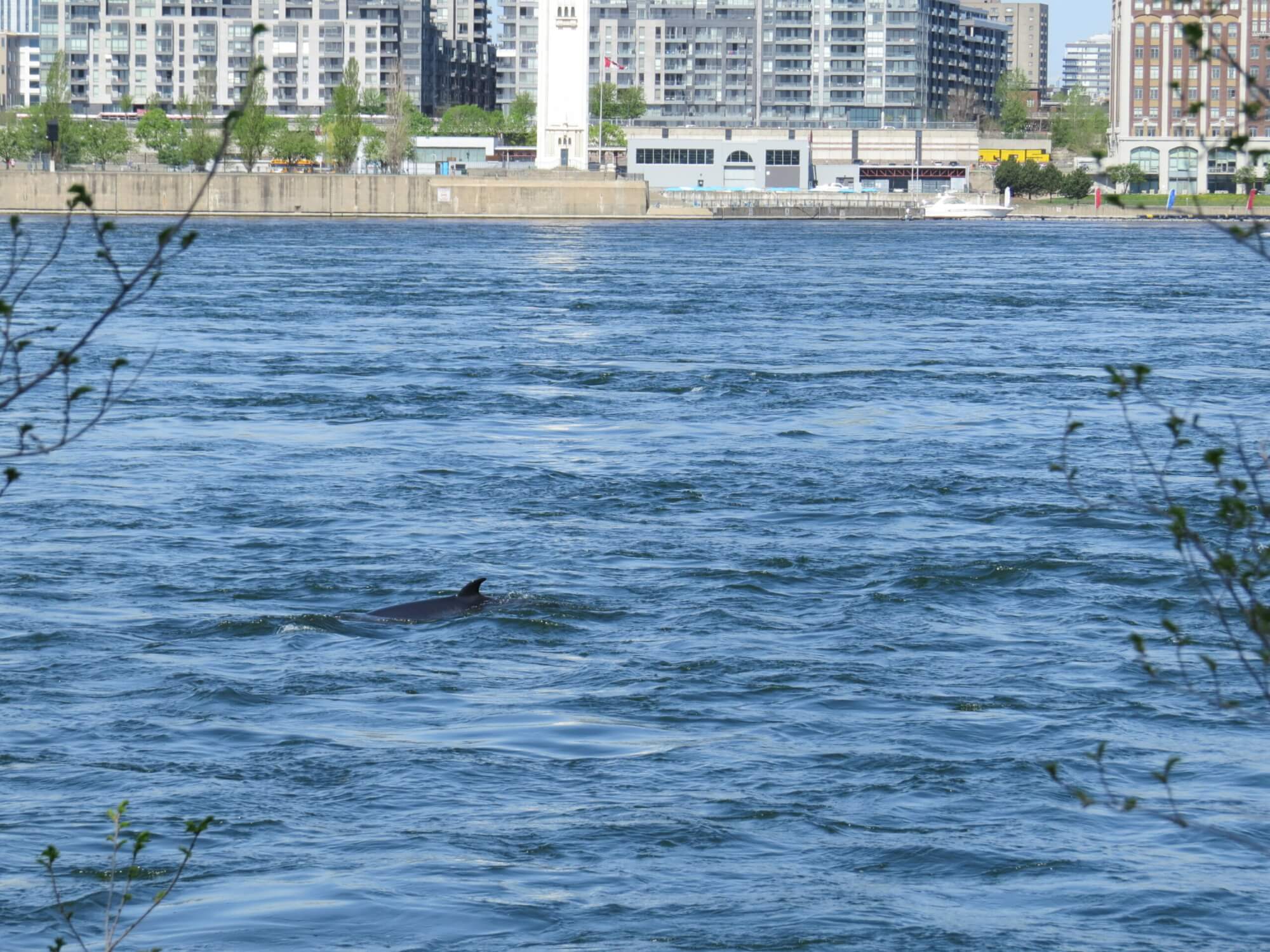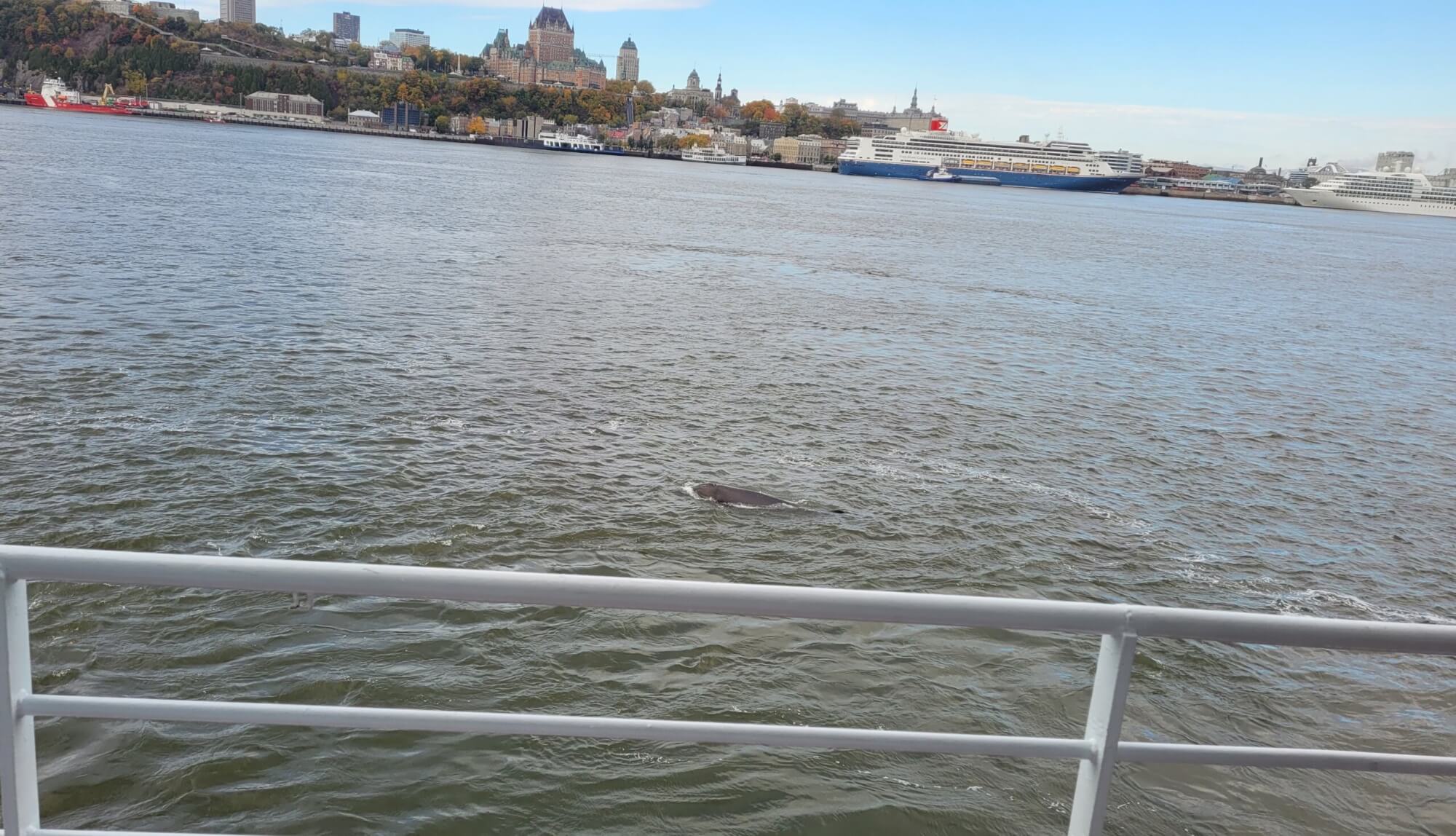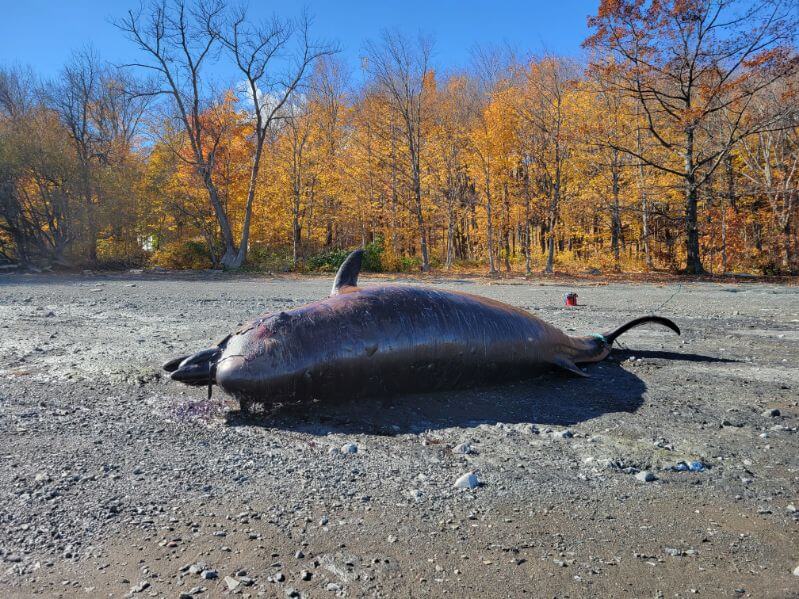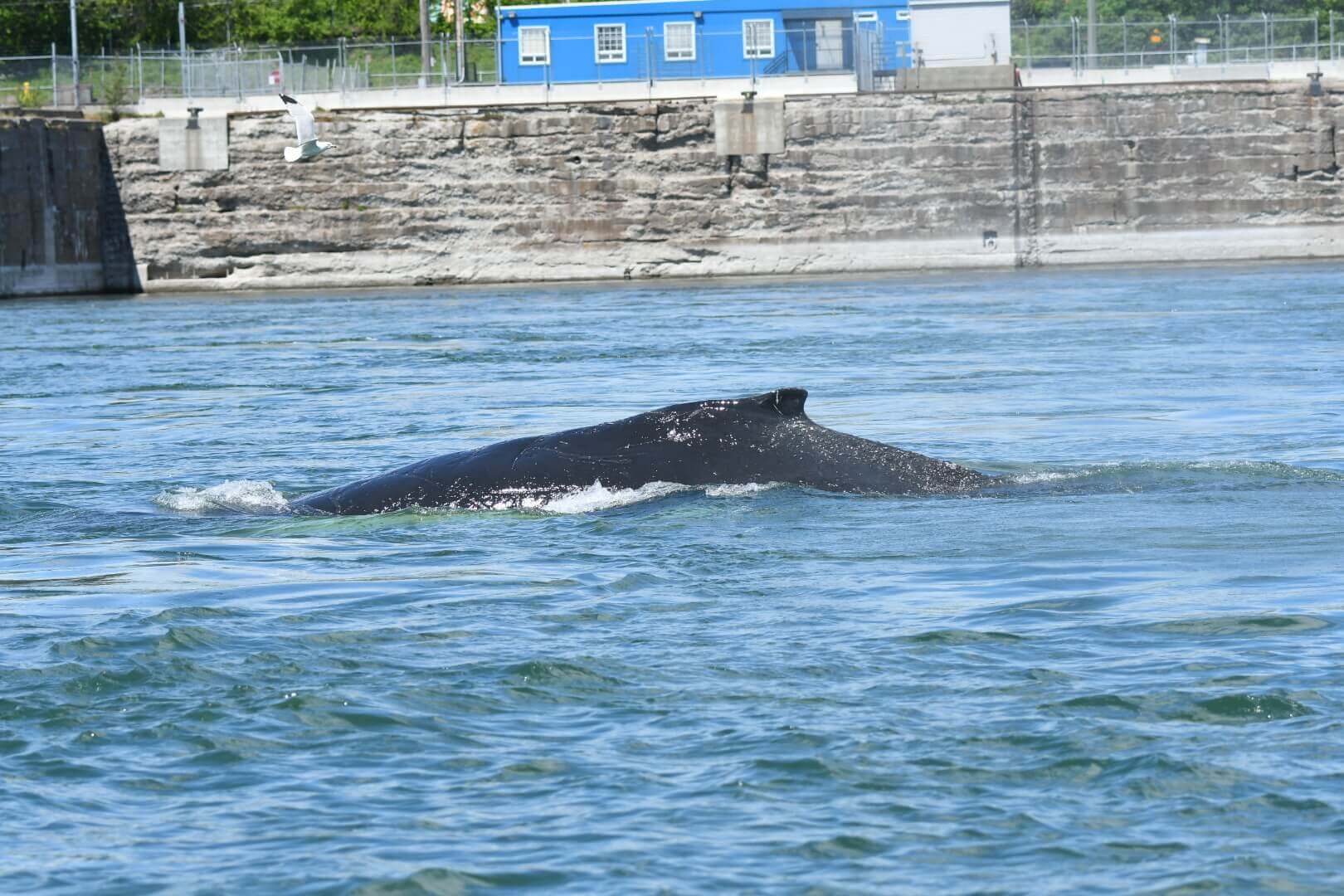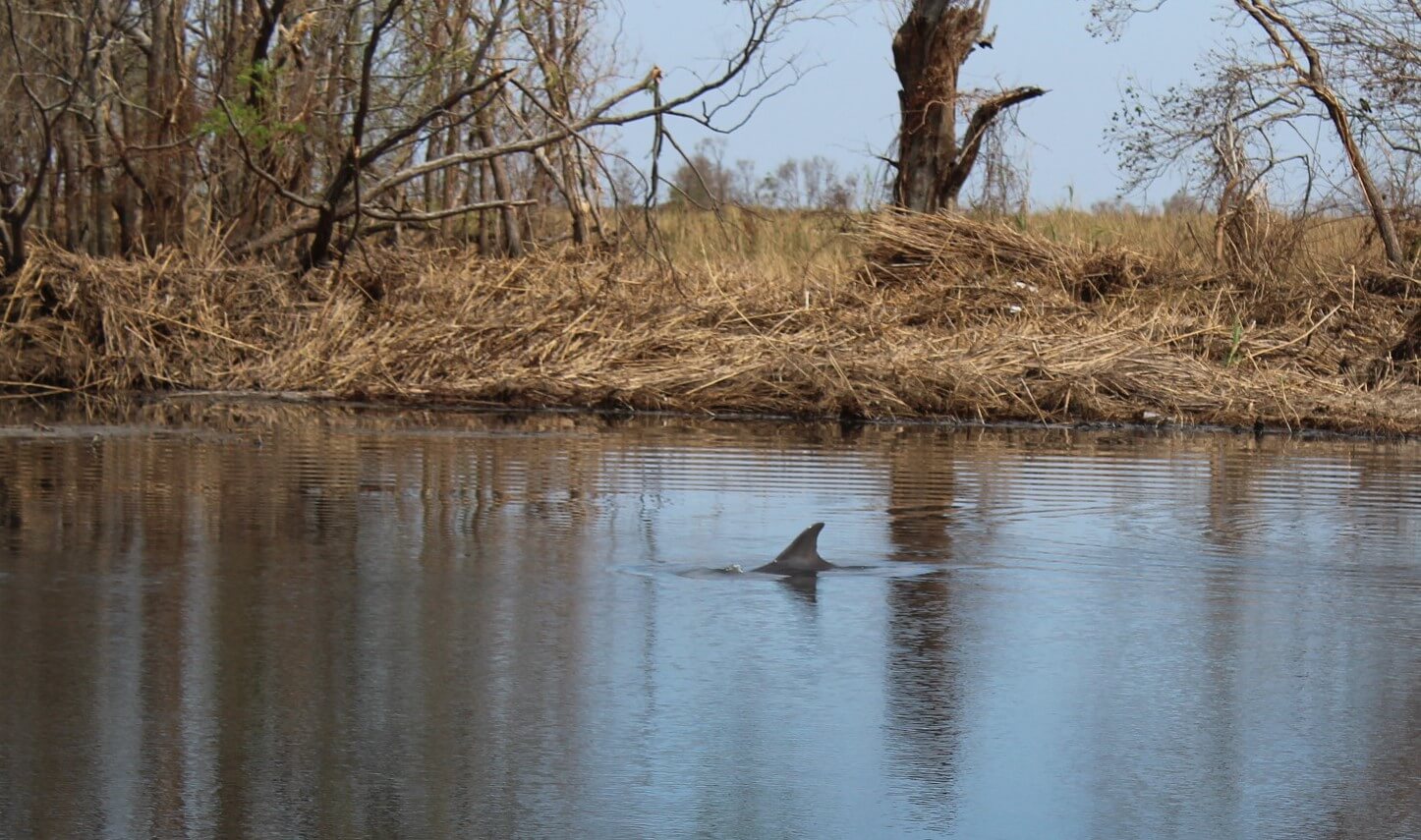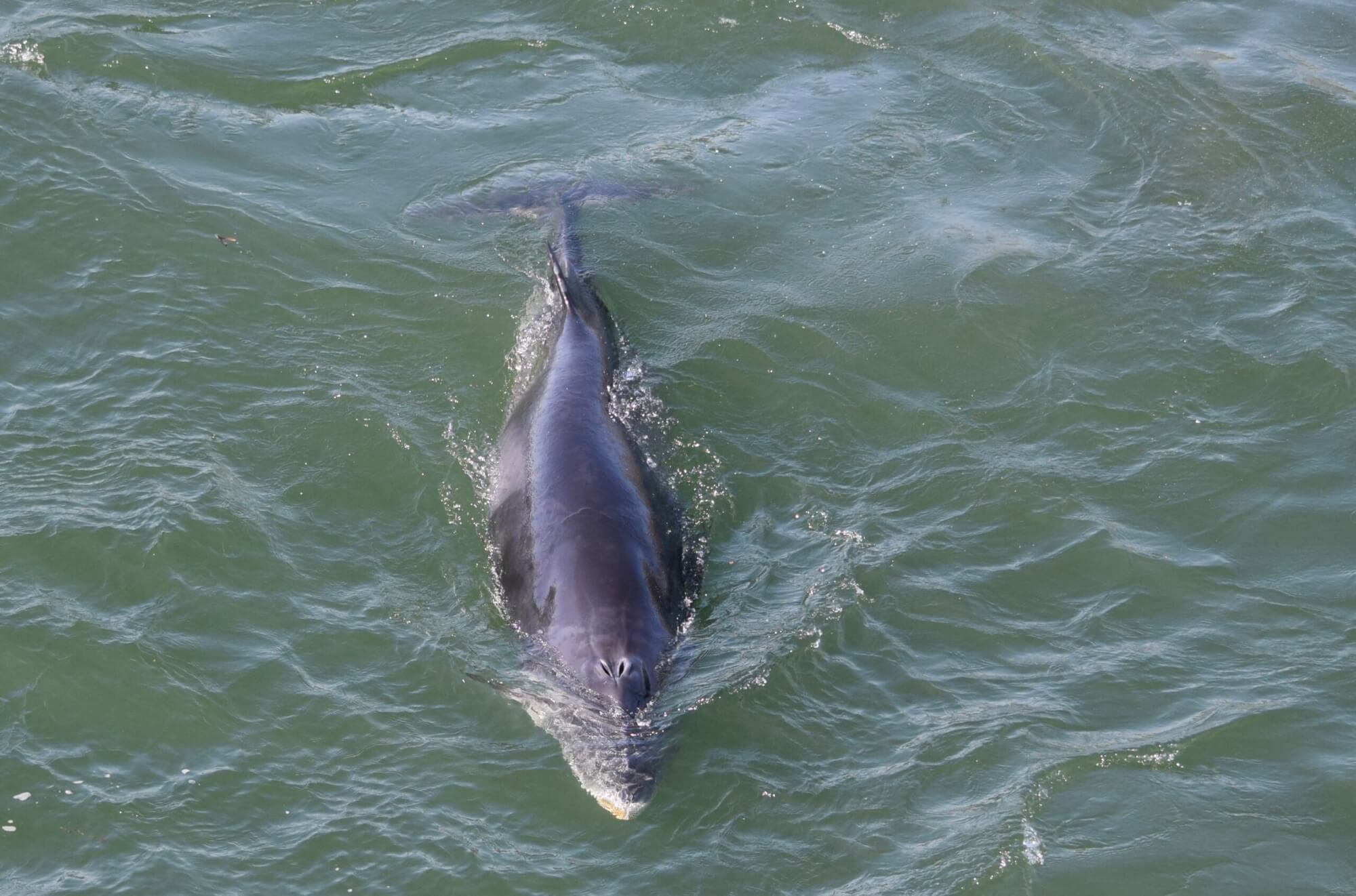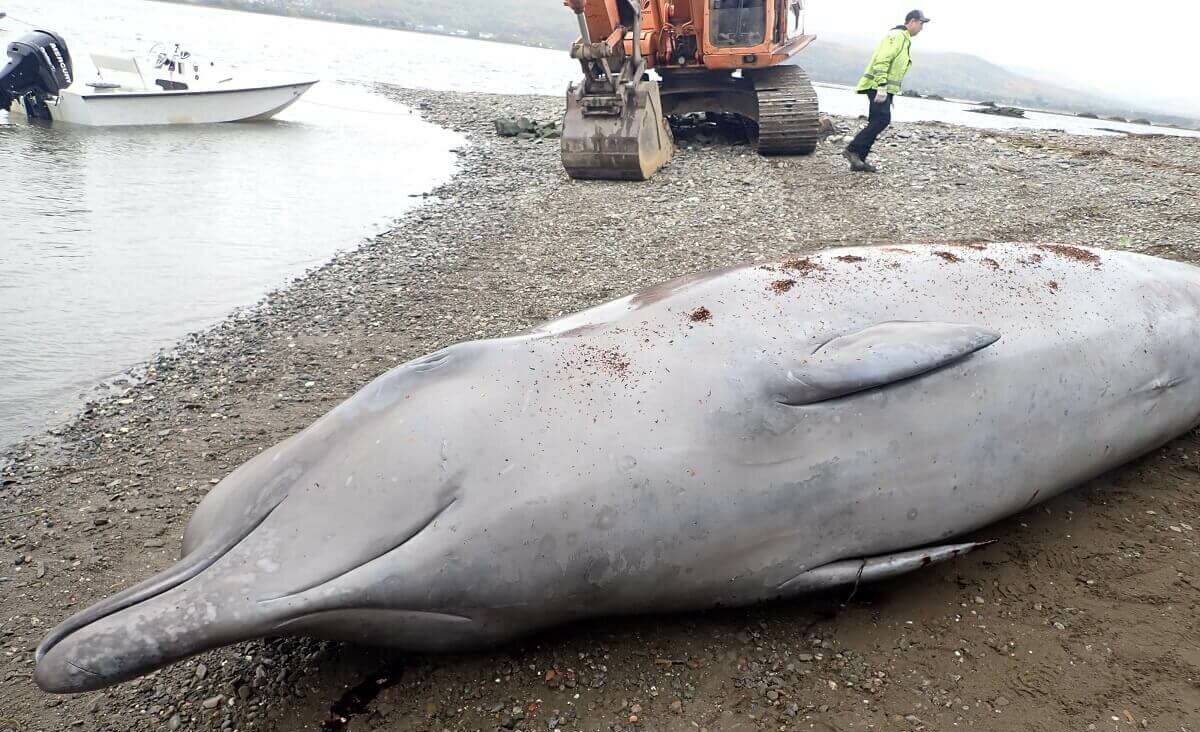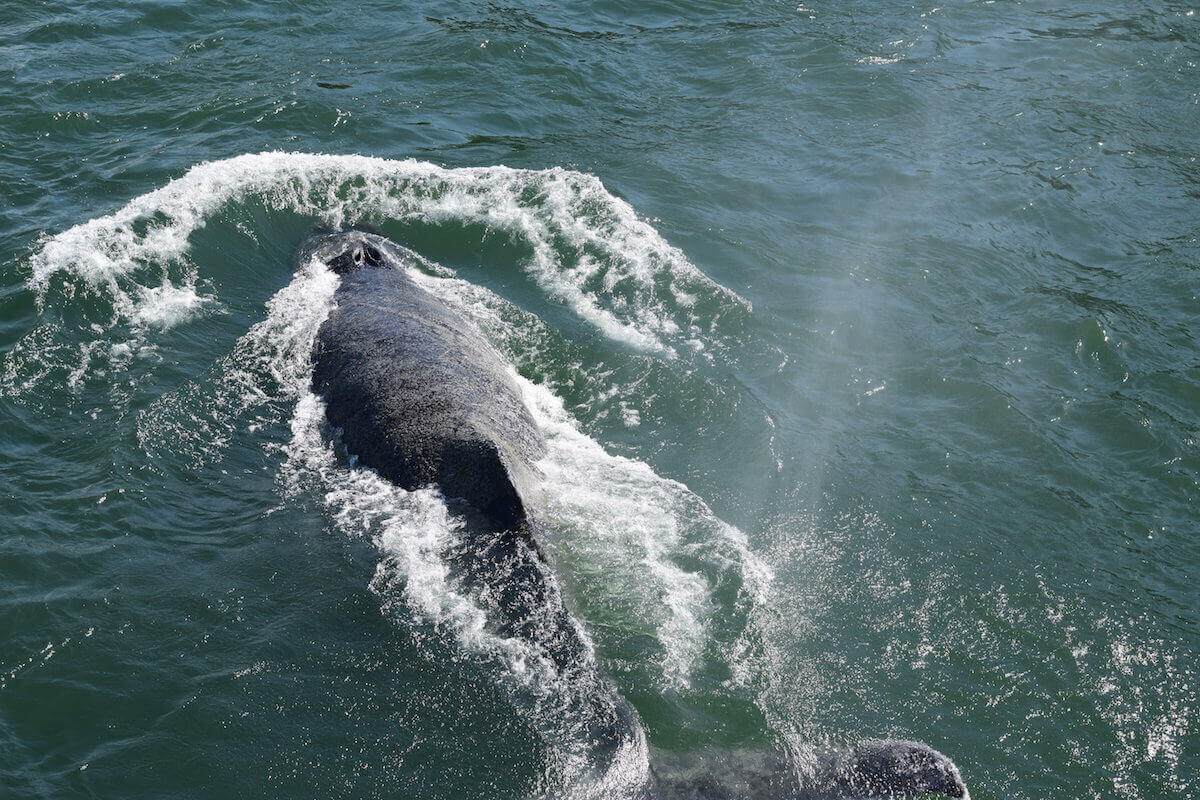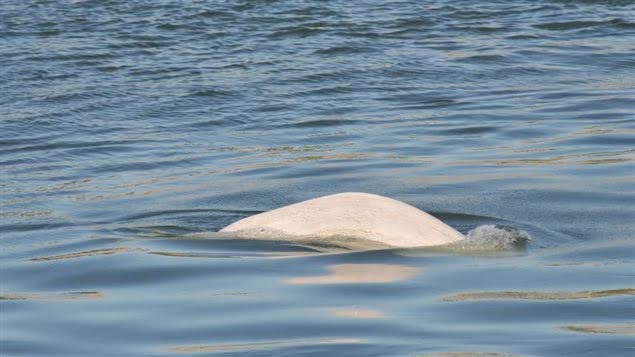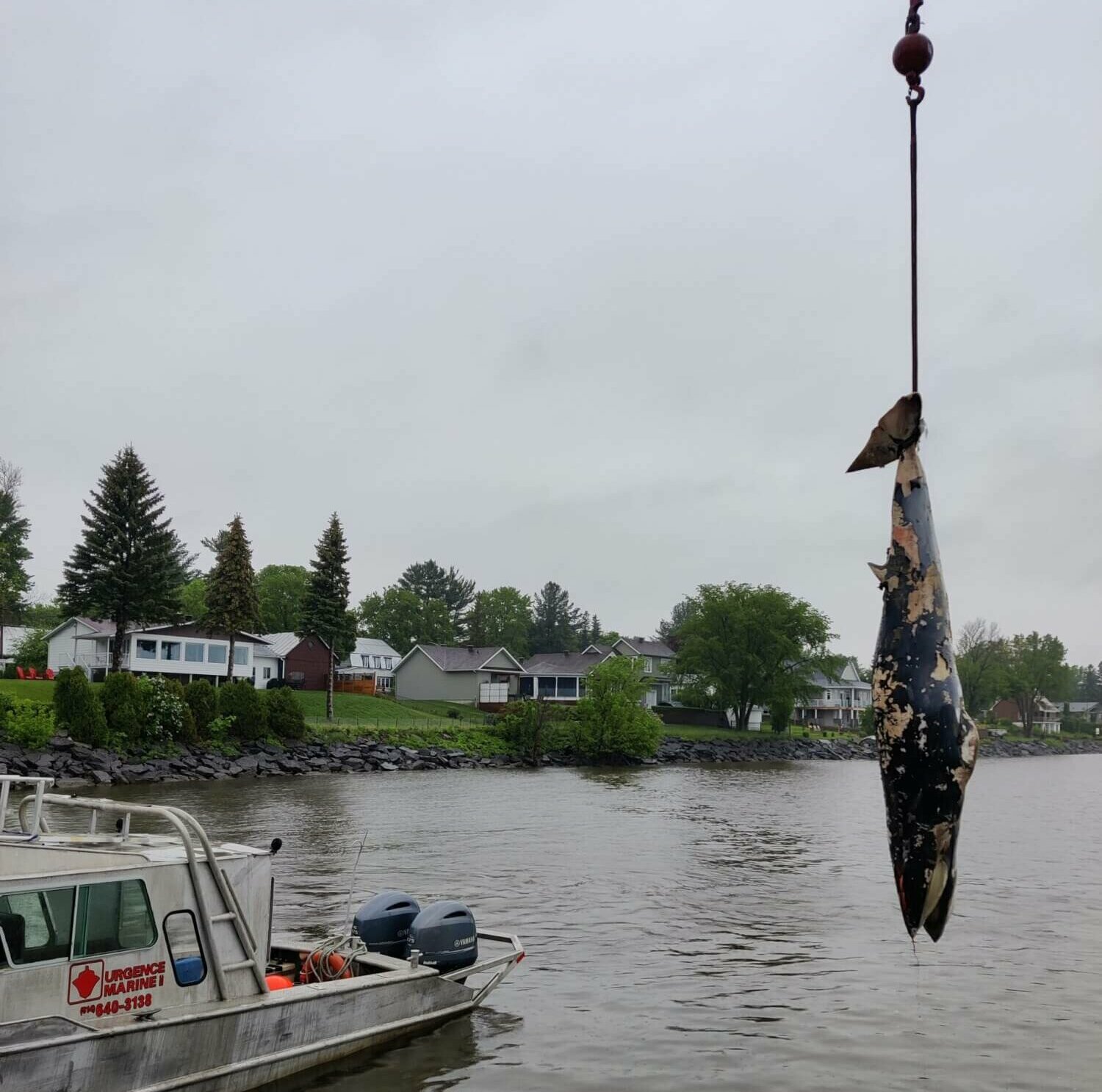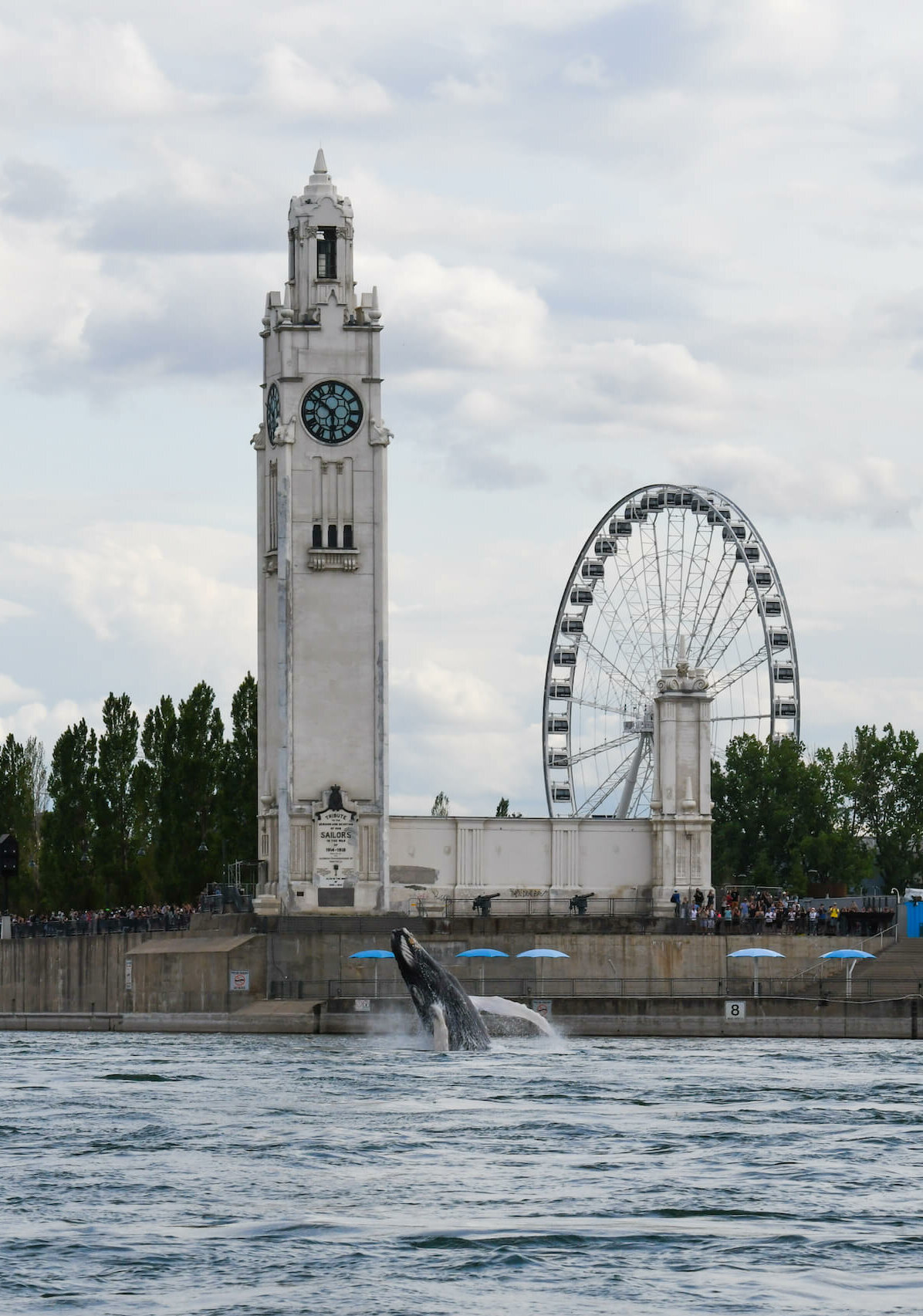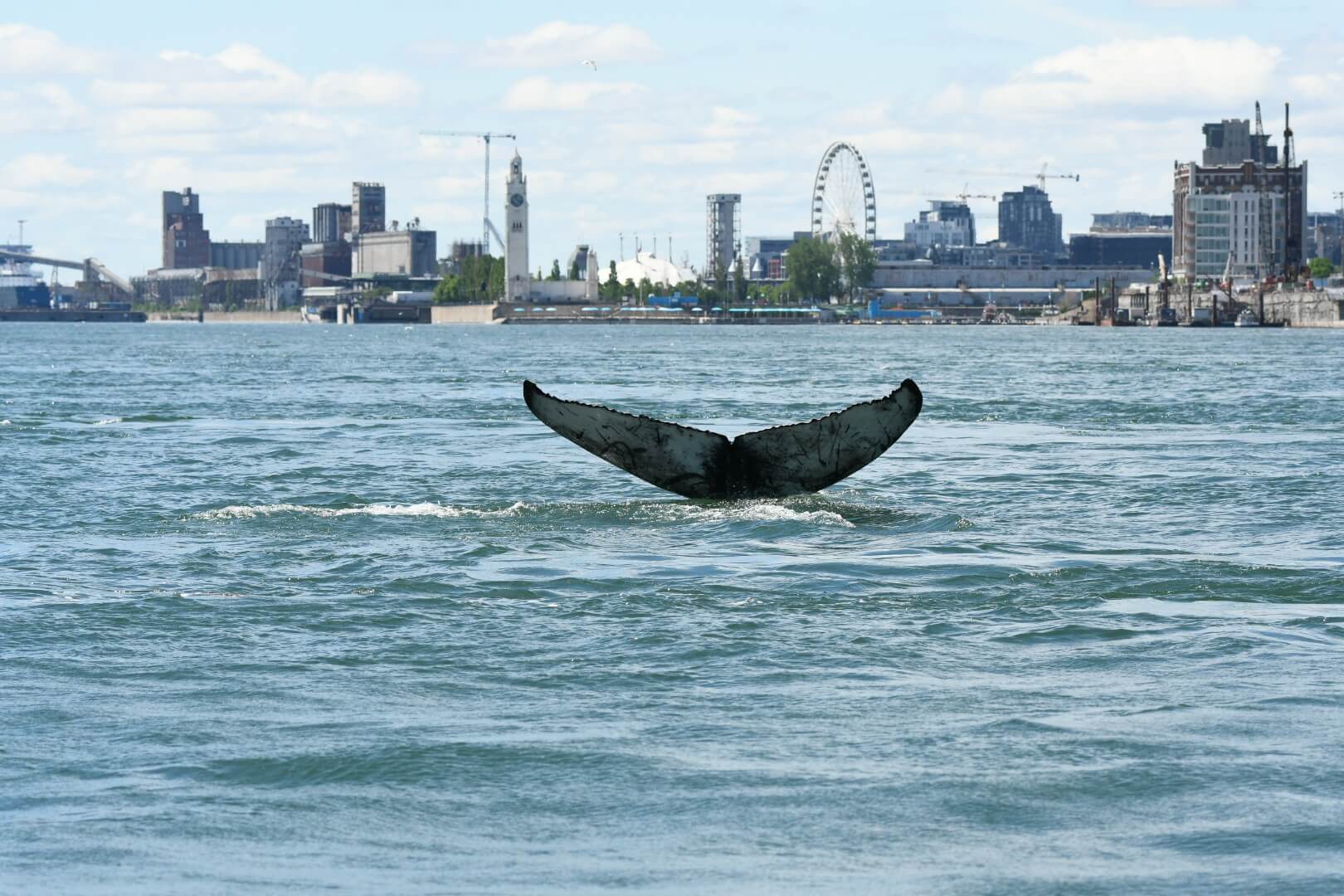What a surprise it was for Montréal’s urbanites when a humpback whale visited the city’s port in 2020! This event was followed by the visit of two minke whales in 2022. What were these cetaceans doing 500 km from their marine environment?
Marine mammals sometimes stray beyond their usual habitat to areas that do not offer ideal conditions for their survival. These marine mammals are referred to as “out of habitat.” Let’s take a closer look at this concept as well as the causes and possible consequences of this phenomenon.
What is meant by “out of habitat”?
Every species of marine mammal has a range, or a geographic area in which the species can typically be found. An animal’s range corresponds to the area offering the environmental conditions the species requires to live and develop. When an individual animal is found outside this distribution, but still in a saltwater environment, it is considered out of range (article in French). In Quebec, a marine mammal is considered “out of habitat” when it is found in a freshwater environment, such as a river, including the St. Lawrence upstream of the eastern tip of Île d’Orléans.
Lack of consensus
However, some organizations have a broader definition of this concept. The international organization Ocean Care considers that a marine mammal is out of habitat when it is found outside its usual range and where the environment can affect its health and odds of survival. Less specific to fresh water, this definition can include leopard seals exploring new areas in New Zealand… over 3,000 km from Antarctica!
A mystery that sometimes persists
Scientists struggle to explain why cetaceans end up outside their usual habitats, because these are mostly isolated and anecdotal events. However, Ocean Care’s report on out-of-habitat marine mammals suggests that these cases are increasing in number or at least in frequency.
Explaining the unexplainable
Scientists struggle to explain why cetaceans end up outside their usual habitats, because these are mostly isolated and anecdotal events. However, Ocean Care’s report on out-of-habitat marine mammals suggests that these cases are increasing in number or at least in frequency.
In some cases, suboptimal health (article in French), such as illness or injury might drive a marine mammal into uncharted waters. The two northern bottlenose whales that were found in 2021 at the mouth of the Restigouche River at the head of Chaleur Bay appeared to be in poor condition and emaciated. Cetaceans in general and beaked whales in particular are highly sensitive to noise and can suffer acoustic injuries from human activities that disrupt their echolocation. The disoriented whales then have more trouble finding their way and can end up in areas outside their usual habitats. In fact, on October 17, a dead northern bottlenose whale was found stranded (article in French) on Île d’Orléans.
Population increases of marine species and changes in the distribution of their prey could lead individuals to stray outside their natural habitat. More individuals also means greater competition for food. According to Ocean Care, these animals might be considered pioneers venturing into new inhospitable territories or even “refugees” in search of food. The latter might contribute to an extension of the species’ range, which evolves as a function of human activity and climate disturbance.
Following violent weather events such as flooding triggered by a hurricane or a tsunami, marine mammals can find themselves trapped for weeks or even months in ponds, lakes, canals, dikes, drainage ditches or even flooded fields! These involuntary displacements sometimes result in animals being relocated back into their normal habitats.
Heightened awareness of marine mammals, the increased visibility of the QMMERN, and growing social media activity may also be contributing factors to the uptick in reported cases. In short, are there really more instances of out-of-habitat marine mammals, or are the numbers skewed by greater public interest?
Additionally, animals outside their usual habitat could be affected by climate change, declines in prey availability, habitat degradation, and even hunting.
Unsuitable for cetaceans
The health and well-being of marine mammals are often compromised by a prolonged stay outside their usual habitat. Freshwater rivers and streams lack the suitable environmental conditions for their survival, either with respect to food availability or the chemical properties of the water.
Cetaceans are particularly vulnerable to extended periods in fresh water. One of the minke whales that was observed for a few days in Montréal waters in 2022 before being found dead was covered in oomycetes, parasites classified as pseudofungi. Belonging to the genus Saprolegnia, oomycetes are naturally present in freshwater environments. These fungal algae colonize existing skin wounds in cetaceans and can potentially lead to infections.
These changes related to freshwater exposure could also predispose the animal to infections or ulcers, in addition to disrupting the levels of electrolytes, proteins or nutrients in its blood! This physical deterioration was noted in a young (between 7 and 14 years old) beluga that visited the Port of Montréal in 2012. However, these changes can be reversed if the animal returns to salt water.
Malnutrition and dehydration
A prolonged period in a freshwater environment also puts cetaceans at risk of malnutrition, as it is difficult for them to find their usual prey there, let alone in sufficient quantities. In fact, individuals that die in fresh water are often found with empty stomachs! In the absence of food, a cetacean that finds itself in fresh water can succumb to hunger or dehydration. Indeed, cetaceans mainly hydrate through their diet. Their prey provides them with the fresh water they need to survive.
Human activities
Out-of-habitat marine mammals are at greater risk of coming into contact with human activities in freshwater areas, where population densities are higher. These animals risk colliding with a boat as well as exposure to higher levels of noise pollution, disturbance or harassment.
The Montréal humpback whale suffered a sudden death in 2020. As the cetacean was in the middle of the seaway, one of the hypotheses put forward by veterinary pathologists following the necropsy suggests that a collision with a boat may be to blame. Possibly dehydrated after spending so much time in fresh water, the whale may also have been the victim of an abrupt drop in sodium levels in its blood.
Act or let nature take its course?
The Quebec Marine Mammal Emergency Response Network (QMMERN) is sometimes called upon to respond to incidents involving cetaceans outside their habitat.
After receiving a report for an out-of-range or out-of-habitat cetacean, QMMERN assesses a number of factors in order to prepare a case-specific response plan. Information collected in the field allows QMMERN’s expert teams to assess the animal’s condition, behaviour and the risks associated with its location. Monitoring of the animal can be set up to track the evolution of the situation. In the case of the minke whales in the Port of Montréal in 2022, teams were on duty from sunrise to sundown to monitor the animals’ behaviour from shore.
Documenting these incidents allows the scientific community to learn more about cetacean incursions into freshwater environments and to monitor the animals’ condition over time.
While it manages these incidents, QMMERN raises public awareness to minimize disturbance of the marine mammal and issues navigational warnings to avoid disturbance or even a collision. By observing and monitoring the animal, the teams collect as much information as they can. In some cases, the animal leaves on its own; other times, it is found dead. In 2017, a beluga spotted in a New Brunswick river was even captured and airlifted to the St. Lawrence Estuary!
Whenever they receive a case of an out-of-range or out-of-habitat marine mammal, the QMMERN and its partners assess the animal’s situation and prepare response plans that take into account the status of the species, the animal’s state of health, its chances of survival, and human responsibility (anthropogenic causes involved).
Time will tell!
The term “out of habitat” is still a grey area. For example, what is the appropriate response when a marine mammal ventures into a brackish river like the Thames in London? Sixty years ago, this waterway was declared biologically dead due to its highly polluted waters. Water quality has improved significantly since then and more than 2,700 marine mammals were recorded between 2004 and 2014, including seals, porpoises, dolphins and fin whales. Scientists assume that the many “out-of-habitat” marine mammals observed in the Thames are therefore following fish stocks, which causes them to venture into freshwater areas!
The improvement of certain habitats and the return of marine species is certainly good news. However, humans residing close to the coast are not always accustomed to cohabiting with marine mammals. Raising awareness of the risks that our activities can have on these animals is a step in the right direction.
Important
Should you see a whale or a seal outside its normal range, promptly contact Marine Mammal Emergencies at 1-877-722-5346.


